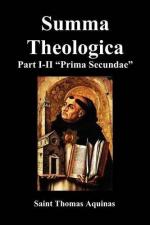Objection 1: It would seem that the ceremonial precepts have not a literal, but merely a figurative cause. For among the ceremonial precepts, the chief was circumcision and the sacrifice of the paschal lamb. But neither of these had any but a figurative cause: because each was given as a sign. For it is written (Gen. 17:11): “You shall circumcise the flesh of your foreskin, that it may be a sign of the covenant between Me and you”: and of the celebration of the Passover it is written (Ex. 13:9): “It shall be as a sign in thy hand, and as a memorial before thy eyes.” Therefore much more did the other ceremonial precepts have none but a figurative reason.
Obj. 2: Further, an effect is proportionate to its cause. But all the ceremonial precepts are figurative, as stated above (Q. 101, A. 2). Therefore they have no other than a figurative cause.
Obj. 3: Further, if it be a matter of indifference whether a certain thing, considered in itself, be done in a particular way or not, it seems that it has not a literal cause. Now there are certain points in the ceremonial precepts, which appear to be a matter of indifference, as to whether they be done in one way or in another: for instance, the number of animals to be offered, and other such particular circumstances. Therefore there is no literal cause for the precepts of the Old Law.
On the contrary, Just as the ceremonial precepts foreshadowed Christ, so did the stories of the Old Testament: for it is written (1 Cor. 10:11) that “all (these things) happened to them in figure.” Now in the stories of the Old Testament, besides the mystical or figurative, there is the literal sense. Therefore the ceremonial precepts had also literal, besides their figurative causes.
I answer that, As stated above (A. 1), the reason for whatever conduces to an end must be taken from that end. Now the end of the ceremonial precepts was twofold: for they were ordained to the Divine worship, for that particular time, and to the foreshadowing of Christ; just as the words of the prophets regarded the time being in such a way as to be utterances figurative of the time to come, as Jerome says on Osee 1:3. Accordingly the reasons for the ceremonial precepts of the Old Law can be taken in two ways. First, in respect of the Divine worship which was to be observed for that particular time: and these reasons are literal: whether they refer to the shunning of idolatry; or recall certain Divine benefits; or remind men of the Divine excellence; or point out the disposition of mind which was then required in those who worshipped God. Secondly, their reasons can be gathered from the point of view of their being ordained to foreshadow Christ: and thus their reasons are figurative and mystical: whether they be taken from Christ Himself and the Church, which pertains to the allegorical sense; or to the morals of the Christian people, which pertains to the moral sense; or to the state of future glory, in as much as we are brought thereto by Christ, which refers to the anagogical sense.




